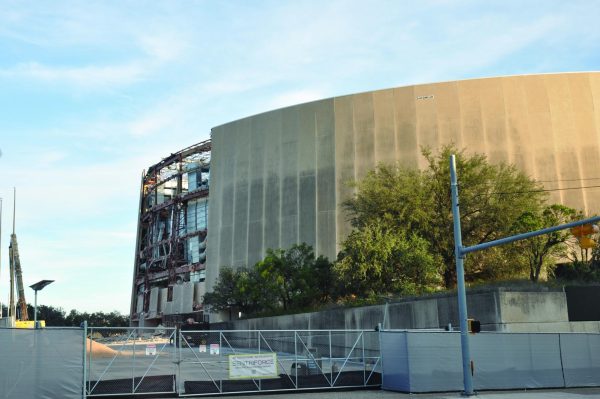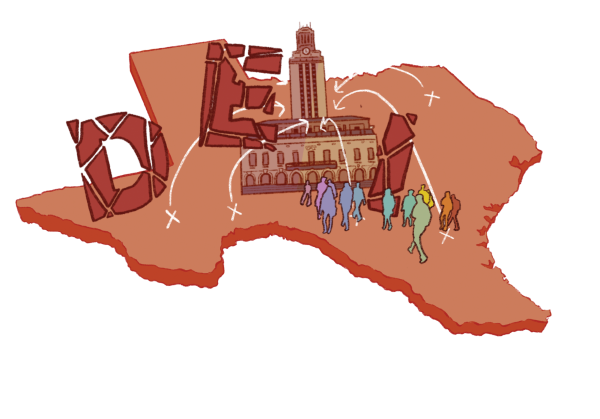Recapture Regiment to Redistribute Revenue
May 5, 2022
In 1993, the Texas state legislature created the recapture program, a form of school financing that sends local taxpayer funding to the state in order to equalize school funding. Recapture, also known as Robinhood, first only affected wealthier districts in the state, but has since grown to almost every district in the state according to the Texas School Coalition. Data collected from the Texas Education Alliance reported that the Austin Independent School District (AISD) paid more than $710 million in the 2020-21 school year.
According to AISD Chief Financial Officer Eduardo Ramos, the district is projected to pay $799 million to the state of Texas next year. Ramos says that is enough funding to buy two professional football stadiums in the span of one year, and multiple studies have continued to show that Austin pays more in recapture fees than any other district in the state.
“Austin ISD is made up of 52% economically disadvantaged students, and yet we send over 53% of local tax collections back to the state and are having to reduce the number of employees in the district to be able to pay our recapture payment to the state,” Ramos said. “The state should invest in public education by allocating more funding to public education. That is the real fix.”
The Texas School Coalition is an organization of school districts that pay recapture and work together to promote sustainable investments for Texas students. The organization’s executive director, Christy Rome, said that with the upward growth that recapture has faced, many districts are now facing a strain in their budget.
“There is a point in time where you could cut fat for a budget, but we are at a point where we are about to cut into the bone,” Rome said. “Many districts are now seeing so many dollars being sent away from their communities when they have great needs across their own district communities, and it is becoming a tougher pill to swallow as you’re sending millions of dollars to the state of Texas.”
The Texas School Coalition also reported that in the last five years, the amount of money sent to the state has nearly doubled. However, Rome said that recapture is founded in the principles of equity where districts could see the visible effects of their help.
“At one time, recapture was structured so that there were partnerships between districts,” Rome said. “Even though money was leaving your local community, you could still see the good that it was doing in another community. Now, in the system that we have, there are not the partnerships that there once were, and it’s more efficient, but schools are sending money directly to the state of Texas, and you don’t get that feel-good of, ‘I’m helping someone else.’”
Chandra Villanueva, Director of Every Texan Economic Opportunity, emphasized that the issues with recapture stem from their lack of adequacy, not equity. Villanueva primarily believes that recapture is one of the best parts of Texas’ school financing system, and does help level the playing field for many districts.
“The problem is that we don’t have adequate funding,” Villanueva said. “So if a recapture district is struggling, that means that all districts across the state are struggling.”
In 2019, the Texas legislature passed House Bill 3 (HB3), a tax-cut bill centered around school financing. Within it, there were changes to the calculations to recapture, which were previously dollar-for-dollar amounts of money circulating between districts and the state, according to Villanueva.
“House Bill 3 did not affect recapture directly, but what it did do was that it broke that revenue between equal revenue and equal taxation,” Villanueva said. “It used to be that every district taxed at a dollar per hundred dollars of property value, and then the state was the one that everyone got relatively equal levels of funding. What HB3 did, because it is actually a tax cut bill and not a school finance bill, is it now lets districts reduce their tax rates individually if they see that property value above the statewide average.”
After HB3 was passed, Villanueva said that many districts were hopeful for their rates of recapture to decrease. Wealthier districts such as Austin were less likely to see their rates of recapture decrease, due to the fact that the bill was centered on a certain amount of growth, according to Villanueva.
“A lot of districts, including Austin, thought that this was going to reduce their rates of recapture significantly, but it really didn’t because when you’re in a high-wealth area it can be hard to get that level of growth,” Villanueva said. “It was actually some of our non-metropolitan small growth areas that really benefited the most from the tax compression in HB3. It was about growth, not wealth, and we are a very wealthy district here in Austin.”
AISD saw a lull in recapture fees for one year, according to Ramos. However, the district is now projecting a continued growth in recapture fees to the state that could potentially reach $1 billion.
“In 2020 our recapture payment dropped to $640 million from $665 million the year before in 2019,” Ramos said. “This current school year, we will send $761 million back to the state and next school year we are projecting that payment to be $799 million. Within the next four years, our recapture payment will balloon to over $1 billion.”
Rome believes that the biggest reason the legislature finds it difficult to better calculate recapture for districts like AISD, is because of the amount of profit their funds bring. Rome related the $3 billion profit the state makes a year to the Texas lottery, which recapture fees outnumber.
“When you reach that point of bringing in such a large amount of revenue, it is hard for the state to say, ‘OK, we can work with you to reduce that,’ because they rely on those dollars, and I think that is where it comes from, and how recapture has gotten to this point of being larger than it was ever intended to be,” Rome said. “It is not just a point of equalization, it is now a source of funding, a source of $3 billion for the state.”
Currently, the calculations of recapture, as well as school funding, are centered around attendance rather than enrollment. In 2020, when schools across the country shifted from in-person to distance learning, Texas districts saw a shift in their funding as well, according to Villanueva.
“We don’t even know how much funding was lost based on the inability to adequately or accurately track attendance during that period,” Villanueva said. “That will also make your wealth per student go up because it makes you look like you have less students overall. This is something called average daily attendance, when your attendance is down but your wealth is still there, which would definitely increase your recapture, or at least have an impact on it as well.”
Additionally, Villanueva notes the growth of state-funded charter schools in Texas and Austin has seen a steep increase in students moving from public AISD schools to charter schools. The Center for Reinventing Public Education notes this as a pattern that is found in cities with histories of segregation and gentrification.
“Charter schools are 100% state funded,” Villanueva said. “They don’t have a local property tax base to tax. All of their money comes from the state. When a traditional ISD loses a student to a charter school, that makes their wealth per student go up, and that makes their recapture go up as well, if they are a recapture district.”
Even after HB3 has passed, there is still motivation for the recapture system to change. In fact, in 2019, research was done to complete a study at the Bush center at Texas A&M University, and organizations like Texas School Coalition and Every Texan continue to push for changes at the capitol to help districts such as AISD.
“I think that those who are paying the taxes need to know where their taxes are going,” Rome said. “Half of that payment is going to Austin ISD, and half of that payment is now going to the state of Texas. I think that people misdirect their anger or frustrations to local leaders because that is who is closest to them, and who they see setting the budget cuts or setting the tax rates, but a lot of that is done by the state. We need people to know to talk to their state leaders.”









